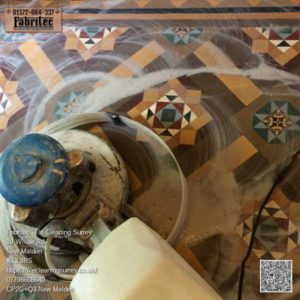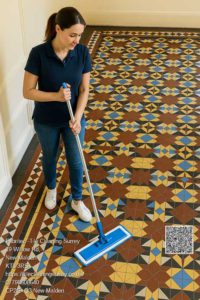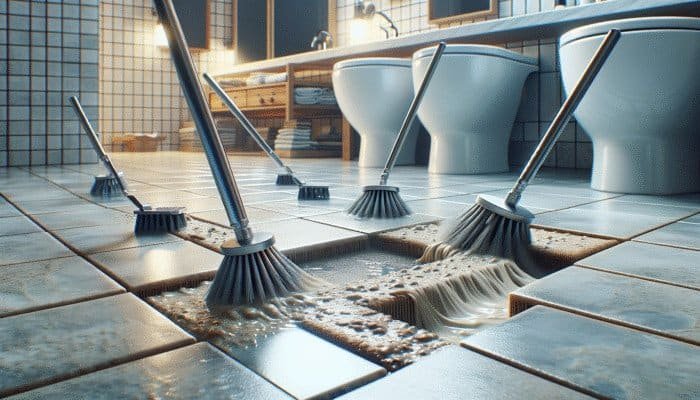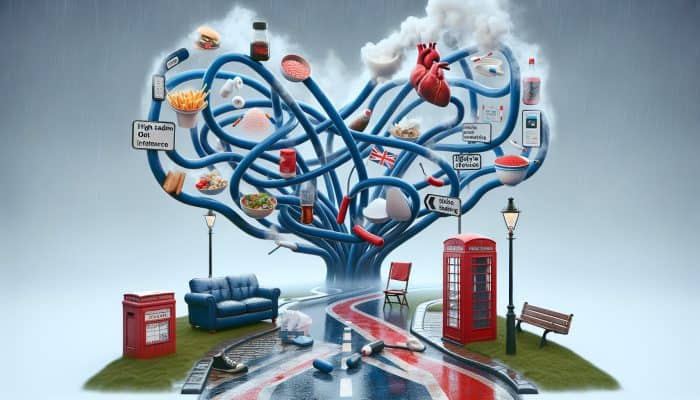Transform Your Home with Professional Victorian Tile Restoration Services
Victorian hallway tiles are not merely functional flooring; they add a remarkable touch of historical elegance that has the power to elevate any living space. To preserve their stunning beauty, these tiles require regular cleaning and maintenance. Known for their intricate patterns and vibrant hues, these tiles were a hallmark of 19th-century architecture and remain a popular choice in modern interior design. However, as the years go by, they encounter unique challenges that necessitate an informed and dedicated approach to upkeep. With the proper techniques and commitment, it is entirely feasible to restore their original splendour, ensuring they continue to enhance the charm and character of your home.
Understanding the Cultural Significance of Victorian Tiles in Interior Design
Victorian tiles go beyond being mere flooring; they are exquisite artifacts that tell a story of craftsmanship from a vibrant historical period. Crafted from durable clay and embellished with intricate designs, these tiles represent a cultural heritage that deserves thoughtful conservation. By choosing to restore these historical treasures, homeowners not only play a role in preserving their cultural legacy but also significantly enhance the value and aesthetic appeal of their residences.
Identifying Common Problems in Neglected Victorian Hallway Tiles
- Loss of Shine and Dull Appearance: A prevalent issue for neglected Victorian tiles is the buildup of wax, which many homeowners apply to enhance shine and protect the surface. Over time, this wax accumulation can mask the tiles’ beauty, resulting in a dull and lifeless look. Insufficient maintenance allows dirt and dust to settle, further reducing the vibrancy of the tiles, which complicates the restoration process.
- Visible Surface Scratches and Damage: Inadequate cleaning and care can lead to scratches and discoloration on the surfaces of Victorian tiles. Often, this degradation stems from grit, grime, or aggressive cleaning methods that erode the tile surface. The once vibrant colours and intricate designs can become obscured, leading to unattractive marks and a loss of the tiles’ original allure.
- Fading of Original Patterns and Colours: One of the most unfortunate effects of neglect is the loss of original charm in Victorian tiles. Each tile was crafted with great attention to detail, designed to enhance the room’s beauty. Over time, neglect can cause faded patterns and washed-out colours, leaving your space feeling outdated and stripped of its historical significance.
Your Comprehensive Guide to Restoring Victorian Tiles to Their Original Beauty

Step 1: Proven Methods for Removing Old Wax
The first step in the restoration process is the careful removal of existing wax layers using non-abrasive and tile-safe cleaning products. These specialised products effectively lift the buildup without harming the underlying surface. This crucial step is necessary for revealing the tiles’ natural beauty and ensuring they regain their intended shine.
Step 2: Thorough Deep Cleaning for Comprehensive Revitalisation
Engaging a professional deep cleaning service specifically targets stubborn grout lines, persistent stains, and embedded dirt, thereby revealing the original vibrancy of the tiles. This stage is essential for tackling any discoloration and ensuring that the tiles are restored to their former glory, ready to impress homeowners and guests alike.
Step 3: Employing Effective Moisture Control Strategies
Older homes often lack modern moisture barriers, making moisture control a vital component of tile care. We utilise dehumidifiers or breathable sealers to prevent future moisture issues, ensuring that your tiles remain in excellent condition for many years ahead.
Step 4: Applying Sealants for Long-Lasting Protection and Durability
Finally, we apply a breathable impregnating sealer that protects the tiles from moisture and stains, ensuring lasting durability while maintaining their stunning appearance. This final step is crucial for preserving the quality and beauty of your tiles over time.
Essential Maintenance Tips Following Restoration
-
1. Use pH-Neutral Cleaners for Optimal Tile Preservation
When caring for your Victorian tiles, it is crucial to select appropriate cleaning products that will protect their appearance and maintain the integrity of the sealant. pH-neutral cleaners are specially formulated to clean surfaces gently without stripping the sealer or damaging the tiles. These gentle cleaners prevent abrasion, discoloration, or fading over time.
Recommended pH-Neutral Cleaners for Victorian Tiles:
- LTP Wash – Perfect for regular cleaning without compromising the sealant.
- Fila Multisurface Cleaner – An effective yet gentle solution ideal for maintaining tile surfaces.
2. Establish a Routine Cleaning Schedule to Avoid Build-Up

Even after your tiles have been restored, dirt, dust, and grease can accumulate over time. Adopting a regular cleaning routine is essential to prevent build-up, ensuring your tiles remain visually appealing. Regularly sweep or vacuum to remove dirt and debris, and mop with a damp cloth to keep the tiles clean and glossy.
- Tip: Use a microfiber mop for gentle yet effective cleaning that won’t scratch the tile surface.
3. Steer Clear of Abrasive Tools and Harsh Chemicals
When maintaining Victorian tiles, it’s essential to avoid using abrasive brushes, harsh scrubbers, or chemical cleaners that can damage the sealant or scratch the tile surface. Utilizing abrasive tools can leave unsightly marks, dulling the shine and making the tiles more susceptible to wear.
Items to Avoid When Cleaning:
- Steel wool pads
- Bleach or ammonia-based cleaners
- Abrasive scrubbing brushes
Instead, choose soft, non-abrasive sponges or cloths to preserve the integrity of the tiles.
4. Tackle Minor Wear and Tear Immediately
Over time, minor wear and tear on your tiles is unavoidable, but there are effective methods to address these concerns without sacrificing the overall finish. If you notice small stains or spots that are tough to remove with regular cleaning, it’s vital to treat them promptly to avoid further damage.
- Spot Cleaning: For stubborn stains, gently rub the area with a mild cleaner and a soft cloth.
- Surface Scuffs: Light scuffs can often be buffed out using a microfiber cloth. For more persistent marks, a thin application of sealer can effectively restore the finish.
Tip: Do not delay cleaning up spills. Staining liquids such as wine, coffee, or oil can penetrate quickly, making removal significantly more challenging later on.
5. Reapply the Sealer Regularly for Ongoing Protection
While the initial restoration process includes sealing the tiles, it’s advisable to reapply the impregnating sealer every few years, depending on foot traffic and wear. The sealer serves as a crucial protective barrier against moisture, dirt, and grime, which can otherwise infiltrate the tiles and cause damage.
Steps for Effectively Applying Sealer:
- Ensure the surface is thoroughly clean and dry before reapplying the sealer.
- Apply the sealer in thin, even coats, allowing each coat to dry completely before applying the next.
- Pay special attention to areas with high foot traffic to ensure they receive adequate protection.
Advantages of Investing in Professional Victorian Hallway Tile Cleaning Services
While some homeowners may consider DIY restoration, hiring a professional tile restoration service often results in superior outcomes. Professionals have access to the right tools, expertise, and knowledge to manage the delicate nature of Victorian tiles, ensuring a successful restoration while minimising the risk of damage.
Tile restoration specialists can provide:
- Comprehensive cleaning and restoration services specifically designed for Victorian tiles.
- Expertise in moisture control and sealing methods to protect your tiles from future harm.
- Professional guidance on effective long-term maintenance strategies for your tiles.
If you’re considering restoring your Victorian tiles, seeking professional help can significantly improve the results.
Need Expert Help? Get in Touch with the Professionals
While DIY cleaning is an option, hiring a professional ensures that no damage is inflicted on the original surface of your tiles.
Your Most Pressing Questions About Victorian Hallway Tile Cleaning Answered
What Cleaning Schedule Is Best for My Victorian Hallway Tiles?
Light cleaning should be performed weekly, with deep cleaning and resealing every 1–2 years, depending on the level of foot traffic.
Can I Use Bleach or Vinegar on My Victorian Tiles?
Absolutely not. These substances can erode the tiles and damage the sealant. Always use only pH-neutral cleaners for safety and efficacy.
Is It Necessary to Remove Wax Before Sealing?
Yes, it is essential to remove wax to ensure that sealers adhere properly and provide lasting protection for your tiles.
Should I Hire a Professional for Tile Restoration Services?
For optimal results and to prevent accidental damage, hiring a professional is strongly advised.
The Timeless Appeal of Victorian Hallway Tiles
Victorian hallway tiles are exquisite remnants of history that can remain captivating for generations when properly cleaned and maintained. Whether you are revitalising a property in Chertsey or simply refreshing your hallway, investing in the care of these distinctive floors is always a prudent decision.
The Article: Uncover the Shocking Transformation of a Neglected Victorian Hallway In Chertsey first appeared on https://tilecleaningsurrey.co.uk
The Article Victorian Hallway Tiles Cleaning Chertsey: How to Restore & Maintain Timeless Floors first appeared on https://fabritec.org
The Article Victorian Hallway Tiles Cleaning: Restore and Care for Timeless Floors Was Found On https://limitsofstrategy.com
References:
Victorian Hallway Tiles Cleaning: Restore and Care for Timeless Floors




It’s fascinating to see how Victorian tiles continue to hold such a prominent place in modern design, bridging our contemporary homes with the rich history of craftsmanship. I remember visiting an old Victorian house where the hallway tiles were in remarkable condition, telling stories through their vibrant patterns. The owners shared how consistent maintenance and the right cleaning techniques helped preserve that charm. It’s a testament to how a little dedication can go a long way in retaining historical elegance.